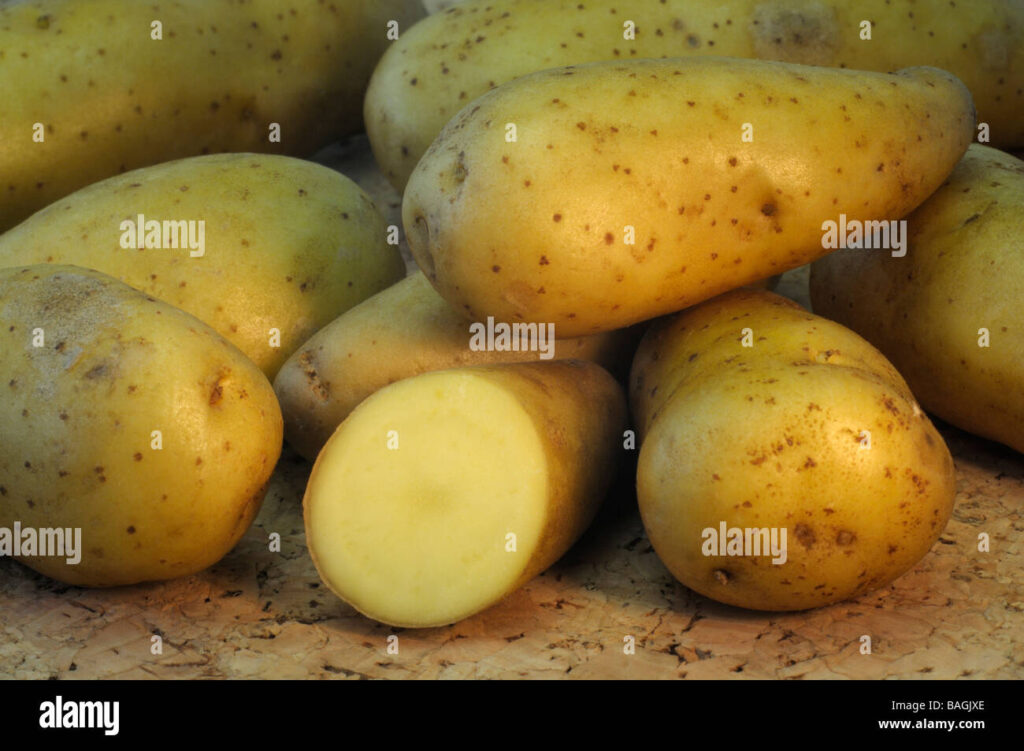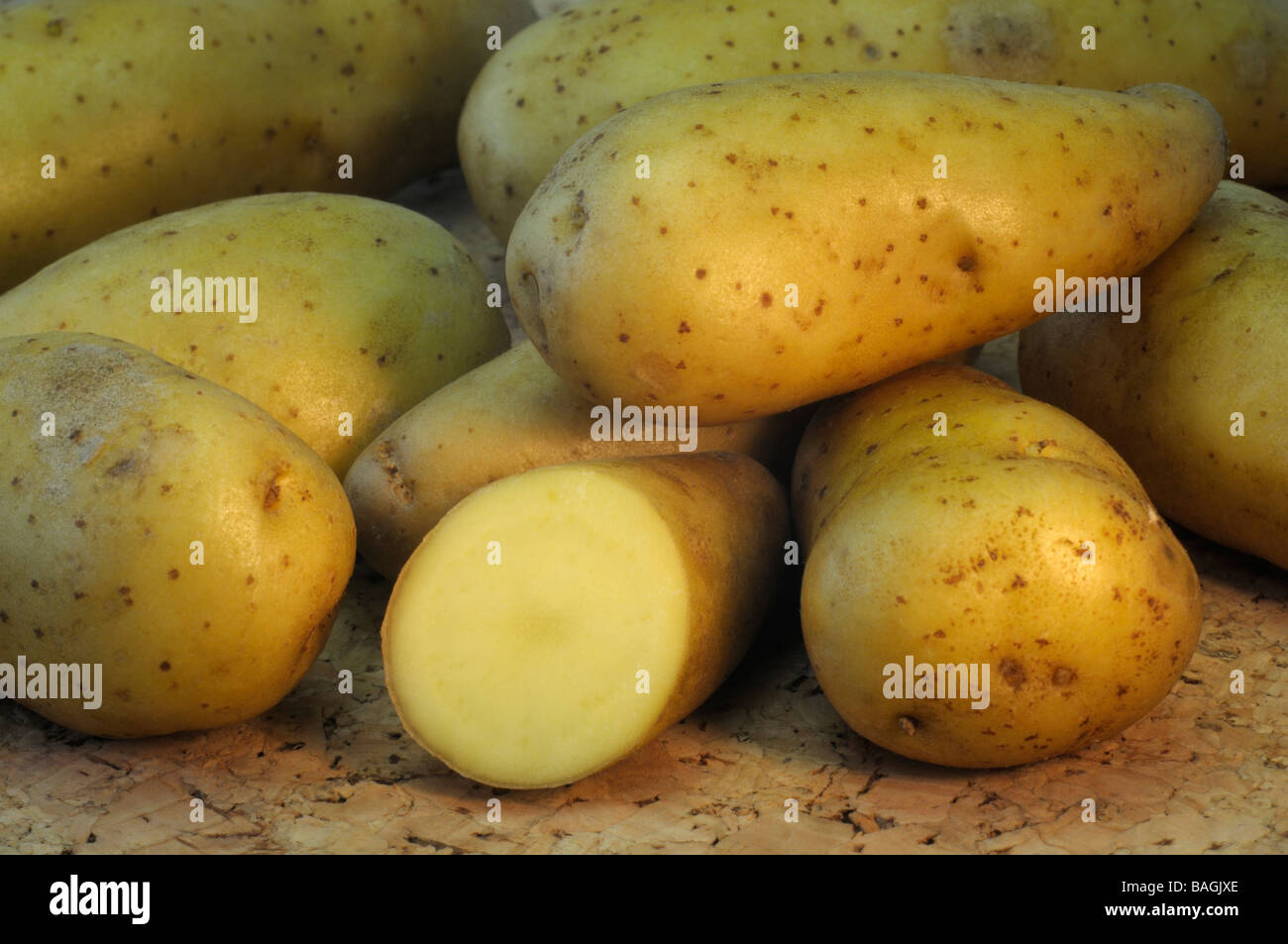
Ratte Potatoes: A Deep Dive into the Culinary Darling
The ratte potato, a small, nutty-flavored potato with a distinctive elongated shape, has become a favorite among chefs and food enthusiasts worldwide. Known for its creamy texture and delicate taste, the ratte potato offers a unique culinary experience compared to other potato varieties. This article delves into the history, characteristics, cultivation, culinary uses, and nutritional benefits of this remarkable tuber.
A Brief History of the Ratte Potato
The ratte potato, also known as ‘La Ratte,’ originates from France, specifically the Île de Ré region. It is believed to be a descendant of potatoes brought back from South America centuries ago. The ratte potato remained relatively obscure for many years, cultivated primarily in small, local farms. However, its exceptional flavor and texture eventually caught the attention of renowned chefs, leading to its rise in popularity on the global culinary stage.
Distinctive Characteristics of the Ratte Potato
Several characteristics set the ratte potato apart from other potato varieties:
- Shape and Size: Ratte potatoes are small and elongated, often described as finger-shaped. They typically measure between 2 to 4 inches in length.
- Skin: The skin is thin, smooth, and yellowish-brown, often with a slightly waxy texture.
- Flesh: The flesh is firm, creamy, and yellow in color.
- Flavor: Ratte potatoes are prized for their unique nutty flavor, often compared to chestnuts or hazelnuts.
- Texture: They have a smooth, almost buttery texture that holds its shape well when cooked.
Cultivation and Growing Conditions
Growing ratte potatoes requires specific conditions to ensure optimal yield and quality. They thrive in well-drained soil with a slightly acidic pH. The ideal climate is temperate with moderate rainfall. Farmers often use traditional cultivation methods to preserve the distinctive characteristics of the ratte potato. Harvesting typically occurs in late summer or early autumn.
Challenges in Cultivation
Despite their popularity, ratte potatoes can be challenging to grow. They are susceptible to certain diseases and pests, requiring careful management and monitoring. The relatively low yield compared to other potato varieties also contributes to their higher price point in the market. However, the superior quality and flavor make the effort worthwhile for many farmers.
Culinary Uses of Ratte Potatoes
The ratte potato’s unique flavor and texture make it a versatile ingredient in a wide range of dishes. Chefs appreciate its ability to retain its shape and creamy consistency when cooked, making it ideal for salads, gratins, and side dishes.
Popular Dishes Featuring Ratte Potatoes
- Salads: Ratte potatoes are a classic addition to salads, particularly those with vinaigrette dressings. Their nutty flavor complements other ingredients like green beans, olives, and herbs.
- Gratins: Their creamy texture makes them perfect for gratins, where they can be layered with cheese, cream, and herbs.
- Roasted Potatoes: Roasting brings out the natural sweetness of ratte potatoes, creating a crispy exterior and a fluffy interior.
- Potato Salad: A simple potato salad can be elevated with the use of ratte potatoes, where their unique flavor shines through.
- Sautéed Potatoes: Sautéed ratte potatoes with herbs and garlic make a delicious and elegant side dish.
The ratte potato adds a touch of sophistication to any dish. Its delicate flavor profile pairs well with a variety of ingredients, making it a favorite among chefs and home cooks alike. [See also: Different Types of Potatoes]
Nutritional Benefits of Ratte Potatoes
Beyond their culinary appeal, ratte potatoes offer several nutritional benefits. They are a good source of carbohydrates, providing energy for the body. They also contain essential vitamins and minerals, including vitamin C, potassium, and vitamin B6.
Key Nutrients Found in Ratte Potatoes
- Vitamin C: An antioxidant that supports immune function and helps protect against cell damage.
- Potassium: An essential mineral that helps regulate blood pressure and supports muscle function.
- Vitamin B6: Important for brain development and function, as well as the formation of red blood cells.
- Fiber: Although not as high in fiber as some other potato varieties, ratte potatoes still contribute to dietary fiber intake, promoting digestive health.
Comparing Ratte Potatoes to Other Varieties
While all potatoes share some common characteristics, the ratte potato stands out in several ways. Compared to Russet potatoes, which are starchy and ideal for baking, ratte potatoes have a lower starch content and a waxier texture. Compared to Yukon Gold potatoes, which are known for their buttery flavor, ratte potatoes offer a more distinct nutty taste. [See also: Yukon Gold vs. Russet Potatoes]
Texture and Flavor Comparison
The unique texture and flavor of the ratte potato make it a preferred choice for dishes where these qualities are highlighted. Its creamy texture and nutty flavor are often considered superior to other potato varieties, contributing to its higher price and demand.
How to Select and Store Ratte Potatoes
When selecting ratte potatoes, look for firm, smooth potatoes with no signs of sprouting or damage. Avoid potatoes that are soft, wrinkled, or have green spots, as these may indicate spoilage or solanine content. Store ratte potatoes in a cool, dark, and well-ventilated place, away from direct sunlight and heat. Properly stored ratte potatoes can last for several weeks.
Tips for Optimal Storage
- Store in a paper bag or mesh bag to allow for air circulation.
- Avoid storing near onions or apples, as these release gases that can cause potatoes to spoil more quickly.
- Check regularly for signs of spoilage and remove any damaged potatoes to prevent them from affecting the others.
The Future of Ratte Potato Cultivation
The demand for ratte potatoes continues to grow, driven by their popularity in gourmet restaurants and among discerning home cooks. Farmers are exploring new cultivation techniques to increase yields and improve resistance to diseases. Sustainable farming practices are also becoming increasingly important to ensure the long-term availability of this culinary gem. [See also: Sustainable Potato Farming]
Innovation in Farming Techniques
Research and development efforts are focused on developing new varieties of ratte potatoes that are more resilient and productive. This includes exploring different breeding methods and adapting cultivation practices to changing environmental conditions. The goal is to maintain the unique characteristics of the ratte potato while improving its overall sustainability and availability.
Ratte Potatoes: A Culinary Staple
In conclusion, the ratte potato is more than just a simple tuber; it is a culinary treasure with a rich history, distinctive characteristics, and a unique flavor profile. Its versatility in the kitchen, combined with its nutritional benefits, makes it a valuable addition to any diet. Whether enjoyed in a simple salad or as part of an elaborate gratin, the ratte potato continues to delight food lovers around the world. From its humble beginnings in the Île de Ré to its current status as a gourmet favorite, the ratte potato has earned its place as a culinary staple. The ratte potato truly offers a unique and satisfying culinary experience, setting it apart from other potato varieties. The distinct nutty flavor of the ratte potato makes it a highly sought-after ingredient. Enjoy the unique taste of the ratte potato in your next culinary creation! The ratte potato is a testament to the power of simple ingredients elevated by unique characteristics and careful cultivation. Discover the joy of cooking with ratte potatoes today!

